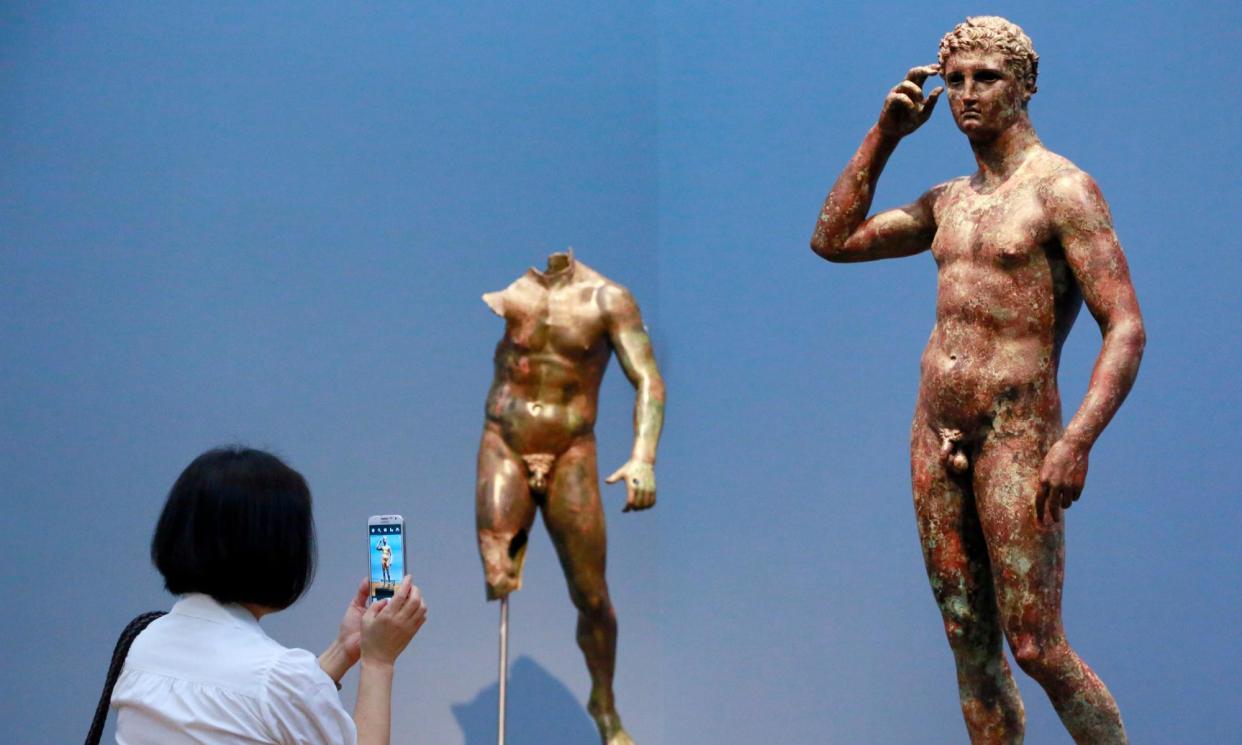Italy can reclaim 2,000-year-old Greek statue from Getty Museum, ECHR rules

A European court has ruled that Italy has every right to reclaim a 2,000-year-old Greek statue from the Getty Museum in California.
The lifesize Victorious Youth, also known as the Athlete from Fano or simply the Getty Bronze, has been at the centre of a years-long dispute after Italy alleged that it had been illegally bought by the J.Paul Getty Trust.
The European court of human rights (ECHR) on Thursday rejected an appeal by the trust against a confiscation order issued by Italy’s supreme court in 2018.
Related: Christie’s withdraws Greek vases from auction over links to convicted dealer
In its ruling, the Strasbourg-based ECHR determined that the Italian authorities had “acted with the purpose of recovering an unlawfully exported piece of cultural heritage” from the Getty Villa Museum in Malibu and that the confiscation order was “proportionate” in ensuring its return.
The ECHR ruling was a chamber judgment, meaning that both sides now have three months to ask for the case to be referred to the court’s grand chamber for a final ruling.
The statue was discovered by fishermen off Pesaro, on Italy’s Adriatic coast, in 1964 and sold several times before eventually being bought by the Getty Trust in 1977. The artefact was bought in Munich from a German art dealer, Herman Heinz Herzer, for almost $4m (£3.2m) through a contract concluded in the UK. It arrived in the US via the port of Boston and has been on display at the Malibu museum since 1978.
Italy has always maintained that the statue was smuggled out of the country and acquired illegally, making the first formal request for its return from the US in 1989.
A lower court in Pesaro was the first to issue a confiscation order in 2010, when Italy upped efforts to retrieve relics looted from the country and smuggled overseas.
Getty has always defended its “legal right” to the statue, which scholars believe was made by the Greek sculptor Lysippos between 300 and 100 BC, arguing that it was found in international waters and so was never part of Italy’s cultural heritage. In its defence, the Getty cites a ruling by Italy’s top court in 1968 which concluded there was no evidence that the statue belonged to Italy.
The Getty did not immediately respond to the Guardian’s request for comment. Posting a photo of the bronze on X, Italy’s culture minister, Gennaro Sangiuliano, wrote: “Happy for the ruling of the Strasbourg court which recognises our motives regarding the Athlete from Fano.”
Felice per la sentenza della Corte di Strasburgo che riconosce le nostre ragioni sull'Atleta di Fano.#Lisippo #2maggio pic.twitter.com/YvhxwbqhY3
— Gennaro Sangiuliano (@g_sangiuliano) May 2, 2024


